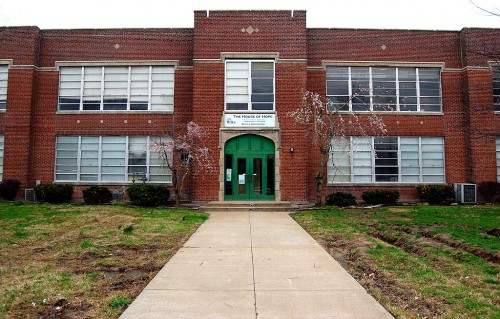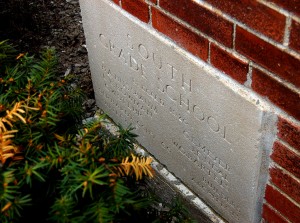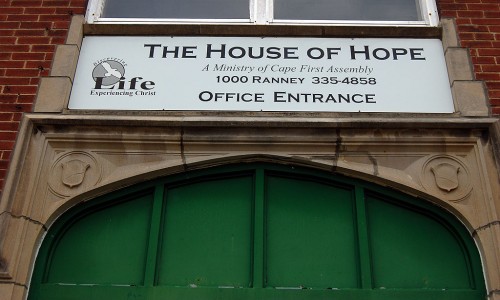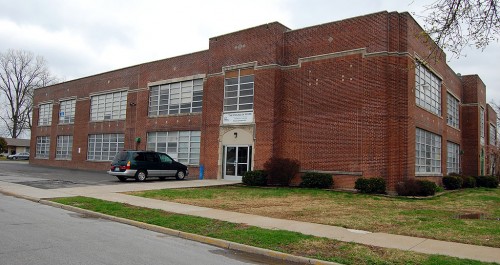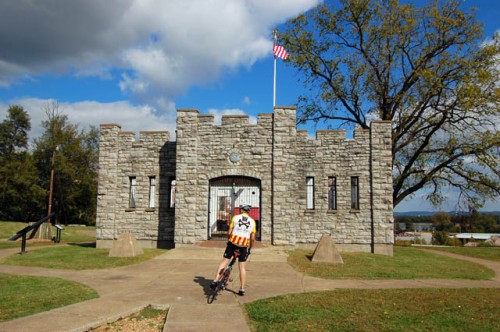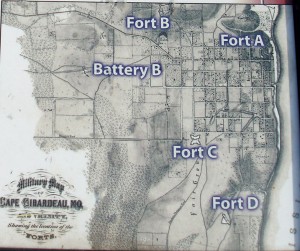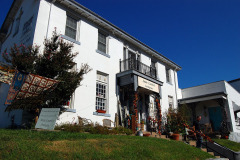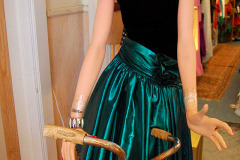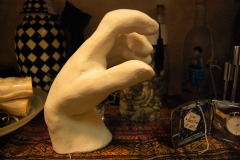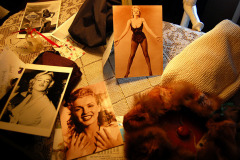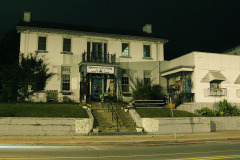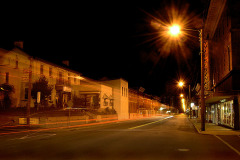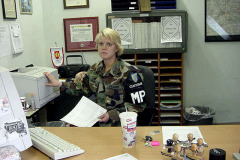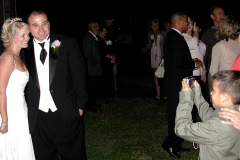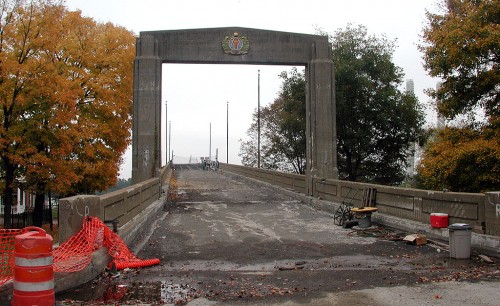 Laurie Everett, owner of Annie Laurie’s Antiques is an extraordinary young woman. I’d say that even if she wasn’t my wife’s niece. We’ve known her since she was a hatchling called Laurie Ann, because the Perry Family decided that one name wasn’t enough. (I’m not going to tell you Lila’s middle name.) I wrote about Annie Laurie’s and some other antique shops on my bike blog in 2008.
Laurie Everett, owner of Annie Laurie’s Antiques is an extraordinary young woman. I’d say that even if she wasn’t my wife’s niece. We’ve known her since she was a hatchling called Laurie Ann, because the Perry Family decided that one name wasn’t enough. (I’m not going to tell you Lila’s middle name.) I wrote about Annie Laurie’s and some other antique shops on my bike blog in 2008.
Laurie’s third from the left
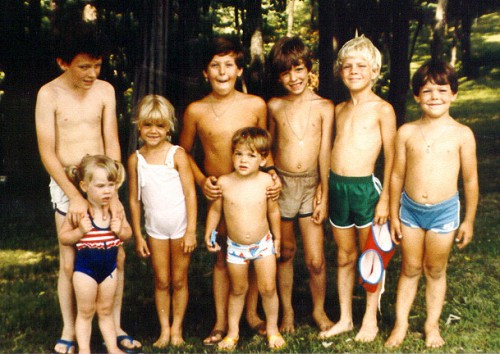 It was family tradition for Lila to shoot what she called The Picture of Florida sons Matt and Adam with of all the Cape nieces and nephews when we came to town. Laurie’s third from the left and Matt and Adam are to the right of her.
It was family tradition for Lila to shoot what she called The Picture of Florida sons Matt and Adam with of all the Cape nieces and nephews when we came to town. Laurie’s third from the left and Matt and Adam are to the right of her.
Laurie’s dad, John Perry, taught her to be able to handle herself. There’s a photo around somewhere of her and John with their heads buried under the hood of a jeep fixing it. He taught her how to shoot, which led her to qualify as an Expert when she joined the army.
 Family has always been important to Laurie. It wasn’t always about hunting, twisting a wrench and getting her hands greasy. She and her dad shared this tender moment one day. (I’ve been told that no feet were harmed in the making of this photograph.)
Family has always been important to Laurie. It wasn’t always about hunting, twisting a wrench and getting her hands greasy. She and her dad shared this tender moment one day. (I’ve been told that no feet were harmed in the making of this photograph.)
Military was “a family thing”
She graduated from Cape Central High School in 1996, after attending Alma Schrader Elementary School. She graduated from SEMO, then decided she wanted to join the Army for the educational benefits, the experience and because “it was a family thing.” Her dad had served in Vietnam.
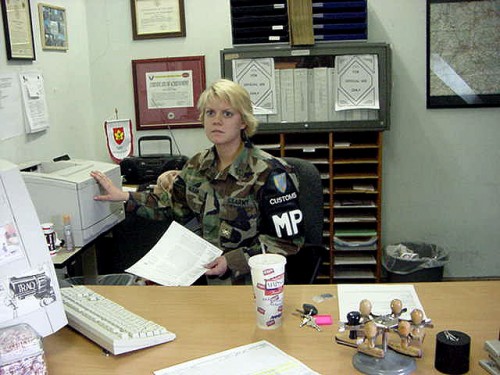 Laurie was a Military Police officer in the Army. She was stationed in Kitzingen, Germany, but she either visited or was deployed in France, Spain, Italy, Czech Republic, Romania, Israel, Bosnia, Croatia, Greece and Switzerland, among others. Her location in Germany put her within about six hours of most of Europe’s major historical landmarks.
Laurie was a Military Police officer in the Army. She was stationed in Kitzingen, Germany, but she either visited or was deployed in France, Spain, Italy, Czech Republic, Romania, Israel, Bosnia, Croatia, Greece and Switzerland, among others. Her location in Germany put her within about six hours of most of Europe’s major historical landmarks.
While stationed in Germany, she received her Master’s Degree in Human Relations from, get this, the University of Oklahoma, which had an outreach program there.
“I’m going to date that girl”
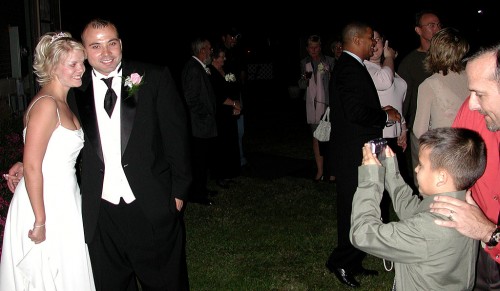 One of her jobs was processing new troops, explaining the local customs and making them aware of what they needed to know. One soldier, Rocky Everett, commented to his buddy, “I’m going to date that girl one day.”
One of her jobs was processing new troops, explaining the local customs and making them aware of what they needed to know. One soldier, Rocky Everett, commented to his buddy, “I’m going to date that girl one day.”
Rocky and Laurie were married in Cape on a cold October night in 2003. They have one son, Fletcher, AKA Flea.
“I was ready to settle down”
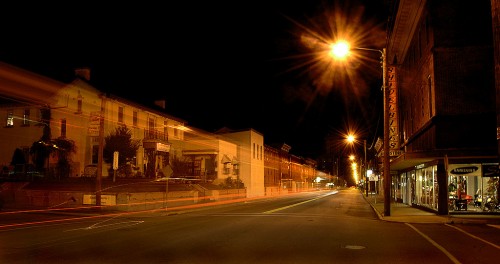 After she got out of the Army, she said, “I was ready to settle down, and this was a good community. I always liked antiques, so I started to work at Annie Laurie’s.”
After she got out of the Army, she said, “I was ready to settle down, and this was a good community. I always liked antiques, so I started to work at Annie Laurie’s.”
When the owner, Mary Robertson, decided to sell the business, Rocky and Laurie jumped at the chance to buy the place. “One stipulation I made to Rocky was that if we were going to do this, we were going to live upstairs.” And, they do.
Antique shop had been funeral home
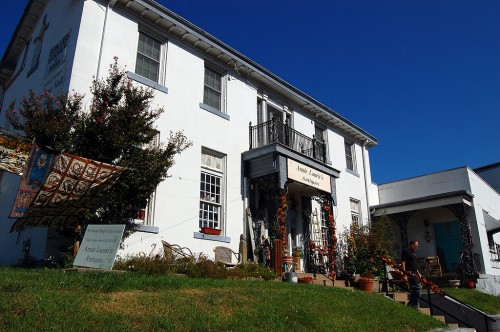 Long-time Cape residents will remember the antique shop as having been the former Brinkopf-Howell Funeral Home. “Do people ever ask you if the place is haunted?” I asked.
Long-time Cape residents will remember the antique shop as having been the former Brinkopf-Howell Funeral Home. “Do people ever ask you if the place is haunted?” I asked.
“No,” she said. “I just tell them that everybody who came here was dead already, so they don’t need to haunt the place.”
Ranked #1 Antique Store in Cape County 3 years running
 Annie Laurie’s has been ranked the Number One antique shop in Cape Girardeau County three out of the last three years.
Annie Laurie’s has been ranked the Number One antique shop in Cape Girardeau County three out of the last three years.
Laurie’s motto, “Expect the Unexpected,” is one of the reasons the shop has been so successful. She’s constantly changing displays (including the mannequin above, which shows up all over the place dressed in outlandish outfits) to make the place interesting.
Annie Laurie’s for period clothing and costumes
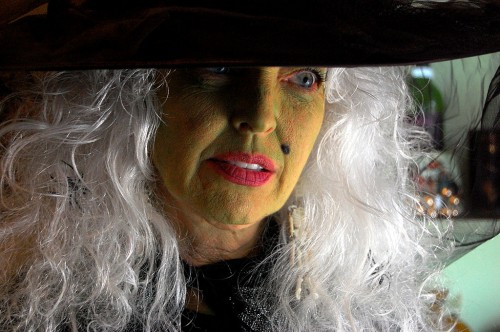 Laurie, who is an adjunct professor at SEMO, teaching marketing, works hard to attract college students with her selection of period costumes and funky clothing. Gail, above, made a convincing witch at Halloween.
Laurie, who is an adjunct professor at SEMO, teaching marketing, works hard to attract college students with her selection of period costumes and funky clothing. Gail, above, made a convincing witch at Halloween.
Need a wig?
 Laurie models the wig she wore for Halloween.
Laurie models the wig she wore for Halloween.
Using the Internet for marketing
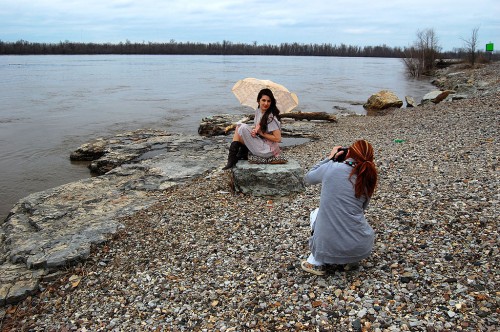 Unlike many businesses in Cape, Laurie understands that the Internet can bring in new customers. “You’d be surprised how many of our customers find us through Google,” she explained.
Unlike many businesses in Cape, Laurie understands that the Internet can bring in new customers. “You’d be surprised how many of our customers find us through Google,” she explained.
Photographer Michelle Huesen is photographing SEMO coed Rachel Hendrickson in an outfit from Annie Laurie’s for use in promotional material. Laurie’s also active in Old Town Cape and the Cape Convention and Visitors Bureau and other organizations.
You can visit Laurie’s web site, Cape Antique Shop, or the shop’s Facebook page.
People feel at home at Annie Laurie’s
 “We create an atmosphere where people feel at home. We have coffee and cookies around. We remember our customers’ names and what they like,” she said. She’s started taking digital photos of customers and posting them on her Facebook page.
“We create an atmosphere where people feel at home. We have coffee and cookies around. We remember our customers’ names and what they like,” she said. She’s started taking digital photos of customers and posting them on her Facebook page.
American Gothic style
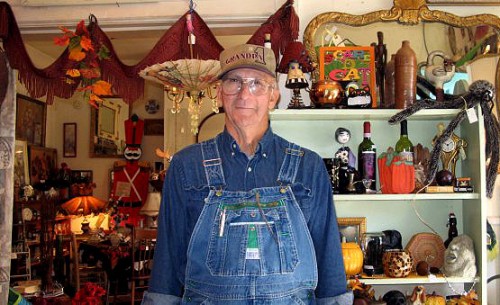 Here was her Facebook comment under this photo: “Lovin’ old men in overalls. This cutie blushed a bit when I asked him if I could take his picture. I just wanted to squeeze his cheeks.“
Here was her Facebook comment under this photo: “Lovin’ old men in overalls. This cutie blushed a bit when I asked him if I could take his picture. I just wanted to squeeze his cheeks.“
Recognized by Southern Living Magazine
 Annie Laurie’s Antiques was featured as “a definite stop” in Southern Living Magazine’s Southern Antique Shops.
Annie Laurie’s Antiques was featured as “a definite stop” in Southern Living Magazine’s Southern Antique Shops.
Laurie was written up in The Southeast Missourian’s 40 Under 40 column April 3, 2009.
Brian Blackwell interviewed her Sept. 28, 2009. He quoted her as saying, “You name it and I have done it. Snow cones, tanning salons, hostess, juvenile detention worker, internship at local police department, soldier, nonprofit organizer, veterinary assistant, office manager, university instructor [and] business owner, just to name a few.”
Annie Laurie’s Antiques Photo Gallery
Here are a selection of photos of Laurie and some of the things in her shop. Click on any photo to make it larger, then click on the left or right side of the photo to move through the gallery.
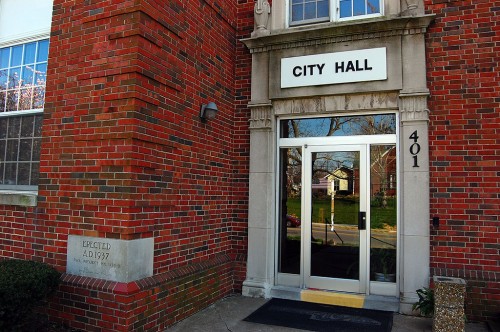 When the state legislature passed legislation in 1867 allowing tax-supported public schools, Lorimier School became the first public school in Cape Girardeau, not a popular concept at the time.
When the state legislature passed legislation in 1867 allowing tax-supported public schools, Lorimier School became the first public school in Cape Girardeau, not a popular concept at the time.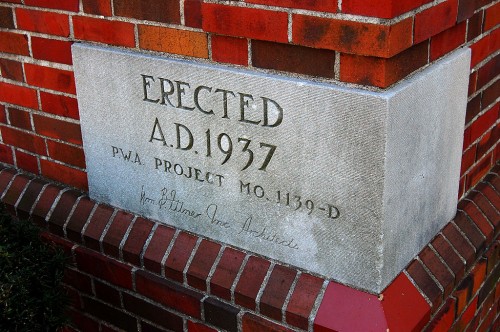 I’ve never seen a cornerstone with cursive writing on it before.
I’ve never seen a cornerstone with cursive writing on it before.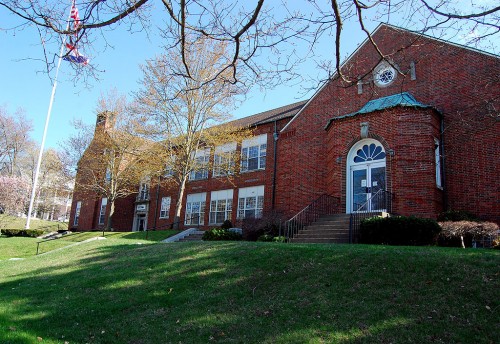 Lorimier School closed in 1975, due to declining enrollment. The city of Cape Girardeau converted the facility to a City Hall, preserving this piece of local history.
Lorimier School closed in 1975, due to declining enrollment. The city of Cape Girardeau converted the facility to a City Hall, preserving this piece of local history.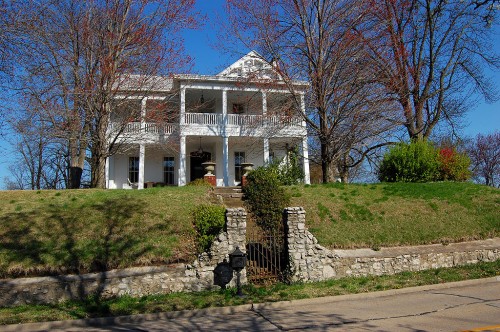 I should know the name of this house to the east of City Hall, but I’m drawing a blank. Can anyone identify it?
I should know the name of this house to the east of City Hall, but I’m drawing a blank. Can anyone identify it?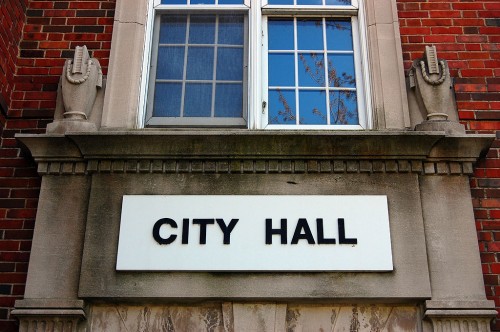 No public building of this era would be complete without some kind of ornate do-hickey to set off the main entrance. The modern, utilitarian City Hall sign injects a jarring sterility to the scene. (That’s the kind of stuff I learned to say in Art 101 in school. It’s a fancy way of saying, “That sign is butt-ugly.”)
No public building of this era would be complete without some kind of ornate do-hickey to set off the main entrance. The modern, utilitarian City Hall sign injects a jarring sterility to the scene. (That’s the kind of stuff I learned to say in Art 101 in school. It’s a fancy way of saying, “That sign is butt-ugly.”)
